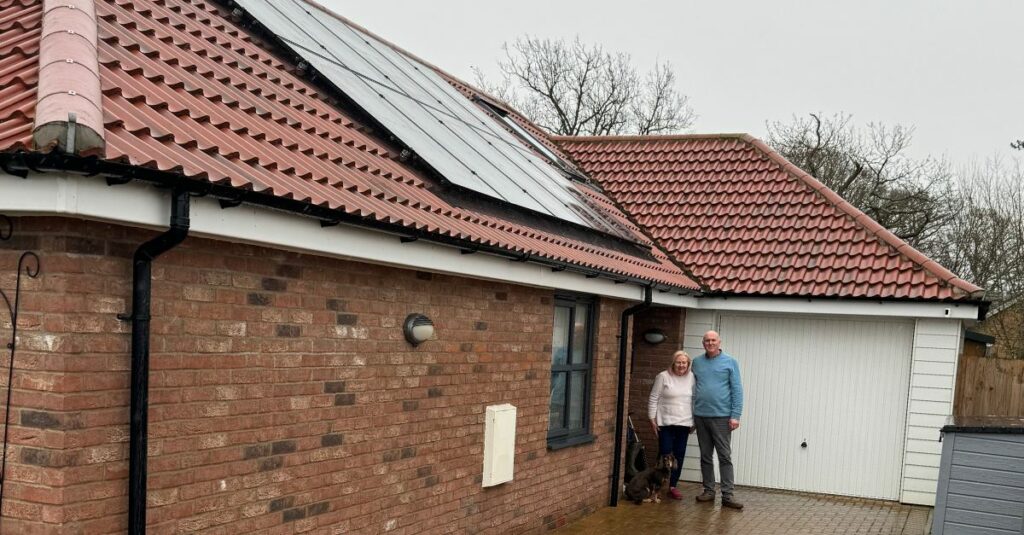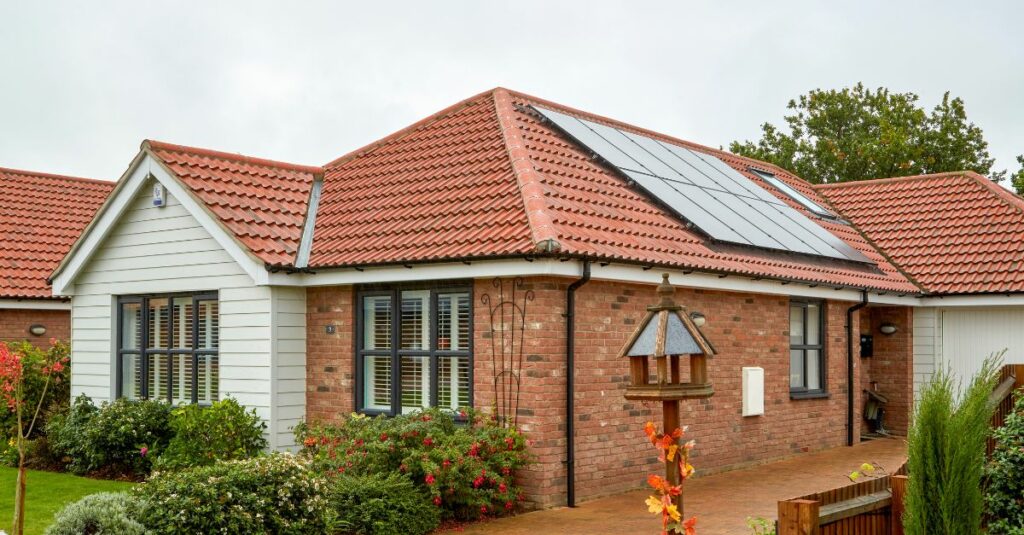Meet the Wrights - a couple that is taking a smart and sustainable step towards a greener tomorrow! In the charming seaside town of Clacton-on-Sea in Essex, Jonathan and Kathleen Wright have taken a leap into renewable energy with Solar Together. Jonathan, a 60-year-old business owner, and his wife Kathleen embarked on an eco-friendly venture by installing solar panels in their home. With their new solar panels installed, their home is now powered by the sun, reducing their carbon footprint one panel at a time. This case study explores their journey, motivations, the installation process, and the resulting benefits of this choice.
Journey to Solar Energy
Q: What motivated you to install solar panels at your home?
A: “We’ve been contemplating solar energy for about ten years, ever since the feed-in tariff was introduced. It’s really about being more energy efficient and addressing environmental issues.”
The Wrights’ deep-seated concern for the environment, combined with their business’s move towards using recyclable materials, naturally led to their decision to invest in solar panels. The rising energy costs in his business, which almost tripled, highlighted the urgency for a sustainable solution.
“The shift toward solar was an ecological decision. With our butchery business moving towards recyclable materials, extending this ethos to our home with solar energy was a natural step.”
Q: How did you first learn about the Solar Together scheme?
A: “We heard about it through family members in Harwich who had solar panels installed a couple of years ago. When the opportunity came up again, we applied, so it was by word of mouth.” John comments: “My daughter-in-law’s family got solar panels through Solar Together Essex, which is when I first became aware of the scheme. "
Q: How did the council backing of the scheme influence your decision?
A: “For us, the main selling point of Solar Together was the council backing. If you’re forking out a large sum of money, you want the reassurance that comes with the … vetting. The backing of Essex County Council made us feel safer. It’s a big investment, and having that endorsement was reassuring.”
Installation Overview
After settling in their forever home, a spacious bungalow in Clacton-on-Sea, the Wrights decided to install a tailored solar panel system. Their home, featuring a south-west facing pitched roof, was an ideal candidate for solar panel installation. After deliberating over the decision for years, the rising energy costs and a push towards self-reliance finally tipped the scales in favour of solar installation.

The project included:
- 10 Solar Panels: Optimally positioned to capture maximum sunlight.
- Battery Storage Capacity: 6.9 kWh to store surplus solar energy.
Cables were run from the solar panels on the bungalow roof, through the roof into the battery and inverter in the loft, and down through the bedroom ceiling into the cupboard.
The Wrights commend the efficient and seamless installation process, noting the professionalism of the installers.
Q: How was the installation process for you?
A: “The installation was was quick and simple, and we didn't have to jump through any hoops or do anything. It was all done for us, and we didn't have to worry about anything. The whole process was quick and hassle-free.”
The sleek design of the panels and the efficient installation process added to the appeal. “I’m really pleased with how my panels look – they’re really smart." Jonathan shares.

Impact
With their system now operational, they’ve experienced a transition towards self-sufficiency. “We hardly need to buy any electricity from the grid,” Jonathan remarked, highlighting the benefits of the battery during winter months and lower tariffs at night.
- Annual Electricity Consumption: Estimated at 2,500 kWh.
- Estimated electricity generation from solar PV system: 3,577 kWh.
- Grid electricity independence / Self-sufficiency (PV Only): 27%
- Annual Savings: Significant savings were predicted, with over £500 saved in the first year and an impressive electricity generation of 3,577 kWh.
Q: What are your thoughts on the visual impact of solar panels on your home?
A: “We hardly notice them, and neither do our neighbors. It’s become a bit of a positive talking point among friends and family.”
Q: Can you share any changes you’ve made around energy efficiency?
A: “We’ve embraced energy-saving measures like LED bulbs and energy-efficient appliances. We use an air fryer and a slow cooker to save energy.”
Q: How has your solar panel experience influenced your perspective on renewable energy?
A: “It’s been exactly what we expected. We’re not expecting miracles, but we’re satisfied with the impact so far and excited to see how it develops over a year.”
Q: How do you think solar panels will affect the resale value of your home?
A: “We believe it will be a positive factor. Solar panels are becoming more common on new builds, so they’ll likely be a sought-after feature in the future.”
Their Advice
The Wright's experience in Clacton-on-Sea is a shining example of how individual initiatives can reduce their carbon footprint while also reaping the financial rewards of renewable energy. Initially hesitant about the upfront costs, John's perspective shifted as he recognised solar panels as a long-term solution amid rising energy costs. His decision was bolstered by Solar Together's council backing, providing trust and credibility.
Jonathan encourages homeowners to view solar panel installation as a wise investment. "Go into it with your eyes open," he advises, adding, "If you can afford it, it's definitely worth it. It's not just about cost savings; it's about playing our part in environmental stewardship."
Having overcome initial uncertainties, the Wrights have become vocal advocates for solar energy within their community. They encourage neighbors and friends by sharing their positive experience: “We’ve already spoken to the people across the road and they’re very interested in having it done.”
“Recently, some family members have also got solar panels, and I was recommending Solar Together, I’m an advocate for sure!” he comments.
Future Sustainability Plans
They are considering further steps like heat pumps, further reducing reliance on gas and electric vehicle charging integration.